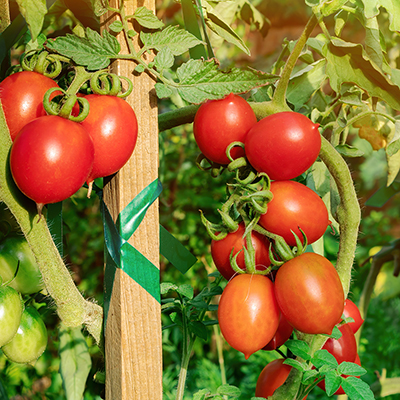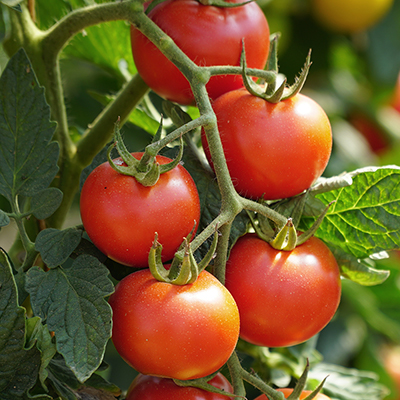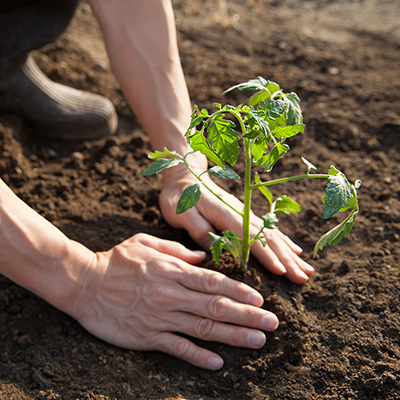How to Can Tomatoes

Last updated September 7, 2023
Garden-fresh tomatoes have an unbeatable taste. Learn how to can tomatoes, and you'll capture their delicious flavors to use throughout the winter. You’ll also save money when you add homegrown, canned tomatoes to soups, stews, sauces and other dishes.
There are two different canning methods for tomatoes. One uses a water bath canner and the other uses a pressure canner.
Difficulty:
Beginner
Duration:
2-4 hours
Table of Contents
Water Bath Canner Vs Pressure Canner Vs Pressure Cooker
How to Prepare Tomatoes for Canning
How to Pack the Canning Jars
Processing Times for Canning Tomatoes
How to Store Home-Canned Tomatoes
Water Bath Canner Vs Pressure Canner Vs Pressure Cooker
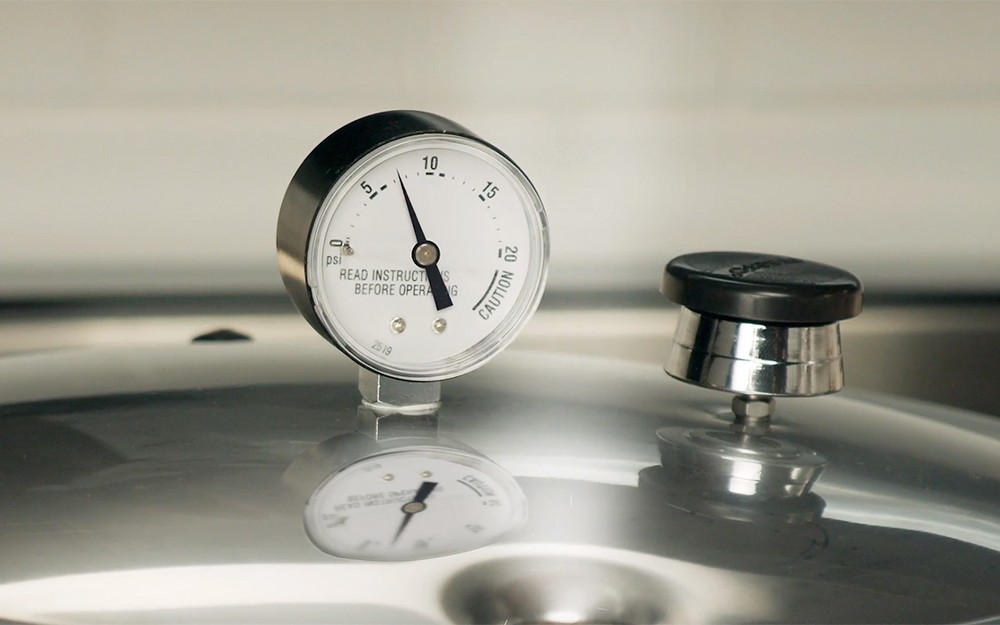
Water bath canners are used to boil water. These large pots can hold quart or pint-size canning jars and enough water to cover them one to two inches deep. Canners come with a lid and a rack with handles, so you can easily raise and lower the jars into the water.
These canners are only for high-acid foods, like when you're pickling produce or your tomatoes are very acidic. Tomatoes are only considered high-acid if the pH is below 4.6, so it depends on your tomato variety.
Pressure canners are made specifically for canning low-acid foods, including tomatoes with low acidity.
Temperature regulation for your canned goods is extremely important. A pressure canner gradually heats and cools the food at a high pressure in a manner that kills and prevents botulism.
A pressure cooker and a pressure canner are two different appliances. You'll need a canner for this task. A few pressure cookers on the market offer canning racks built in, but it's uncommon. Never use a pressure cooker to can food, as you're putting yourself at risk for food poisoning.
Whether you can tomatoes in a water bath canner or a pressure canner, it’s important to add bottled lemon juice or citric acid to the jars to raise the acidity level of the tomatoes and kill potentially deadly bacteria or spores. Do not use fresh lemon juice.
Safety Tips: Use a dry towel to protect your hands when holding hot jars. Slowly add or remove jars from hot water with a jar lifter, so you don’t get splashed. When you remove a lid, stand back to avoid the escaping heat and steam.
A canning kit contains a jar lifter and other accessories you'll need.
How to Prepare Tomatoes for Canning
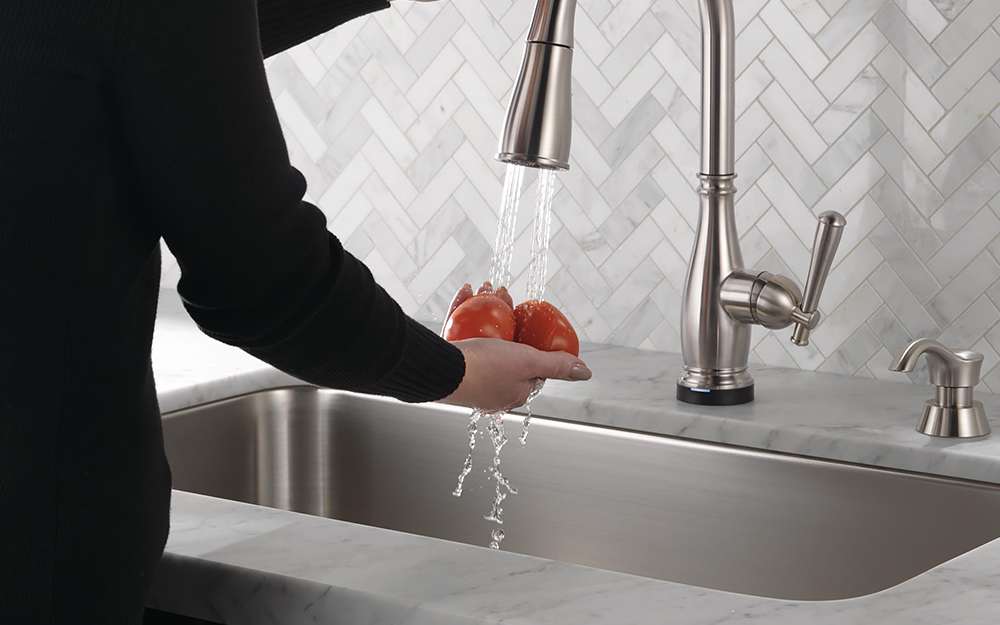
Start with ripe, firm tomatoes with no bruises, bad spots or signs of disease.
- Wash home canning jars in hot, soapy water, rinse them and keep them in simmering water until you’re ready to use them. Wash the canning lids and bands in warm, soapy water and set them aside.
- Fill the canner half-full of water and bring it to a boil while you prepare the tomatoes.
- Wash the tomatoes and dunk them in another pot of boiling water for 30 to 60 seconds, or until the skins split. Take them out and immediately put them in cold water. When they’re cool enough to handle, slip or peel off the skins and core them.
- Put the tomatoes in another pot and crush them, cut them into halves or quarters or leave them whole. Add enough water to cover them, if there's not enough juice. Boil them gently for five minutes, stirring occasionally.
How to Pack the Canning Jars

Now it's time to add 2 tablespoons of bottled lemon juice or 1/2 teaspoon of citric acid to each quart jar. For pints, use 1 tablespoon of bottled lemon juice or 1/4 teaspoon of citric acid.
- Take the home canning jars out of the simmering water and pack them with the hot tomatoes. A food-safe funnel from a canning kit makes this easier.
- If desired, add one teaspoon of salt to each quart jar or 1/2 teaspoon per pint jar.
- Insert a clean knife with a flat blade or a bubble remover into the jars to remove air bubbles. Press the tomatoes gently to fill any spaces with juice.
- Use a clean, damp paper towel to wipe the rims of the jars.
- Put on the lids and bands. Tighten the bands until they’re fingertip tight. Do not overtighten.
- Use a jar lifter to lower the jars into the water bath canner or pressure canner. Make sure they are submerged one to two inches deep.
- If you need more water, heat some to boiling in a kettle and pour it carefully around the jars.
Processing Times for Canning Tomatoes
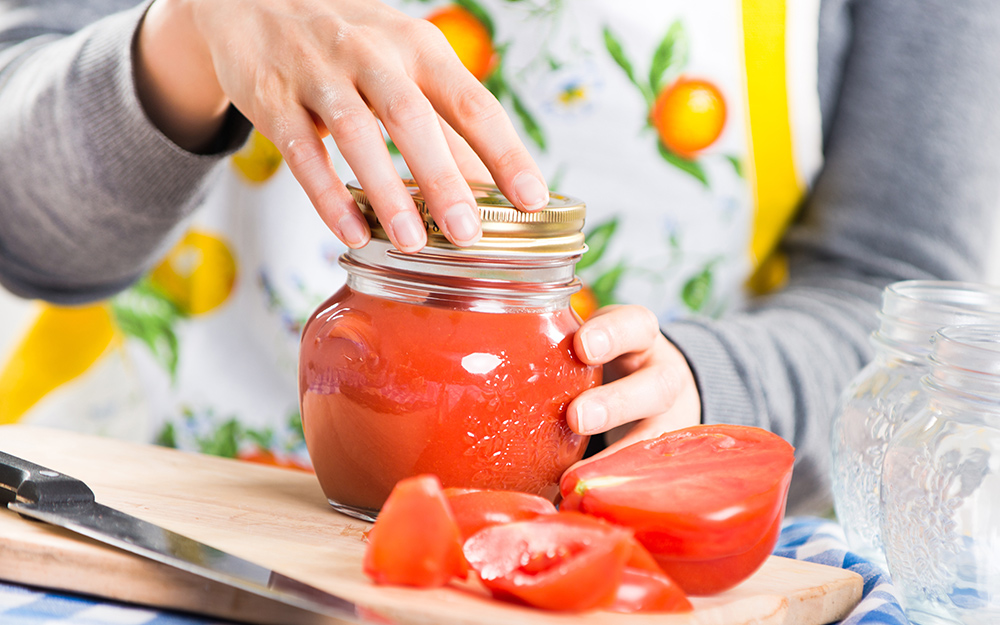
Processing times will differ, depending on whether you're using a water bath canner or a pressure canner. Times will also vary depending on your altitude. Follow the manufacturer's directions for your cooker or canner or use the safe processing times set by the USDA National Institute of Food and Agriculture.
- As a rule of thumb, quarts of tomatoes should be processed in a water bath canner for 45 minutes and pints for 35 minutes; but again, this can vary.
- Use a jar lifter to remove the jars from the canner when the processing time is up. Let them air dry and cool on a kitchen counter.
- Check the seals on the lids after 24 hours. They should not flex or give when gently pressed in the center.
- If you’re processing tomatoes in a pressure canner, seal the lid according to the manufacturer’s directions and process at the recommended PSI for the recommended length of time for your altitude.
- When the processing time is up, depressurize the cooker by venting it and removing the lid as instructed by the manufacturer. The directions may tell you to let the jars rest, or acclimate to the drop in pressure, before you take them out of the cooker with a jar lifter.
- As with a canner, check the seals on the lids after 24 hours. They should not flex or give when gently pressed in the center.
- Jars that did not seal properly should be used right away or the contents should be discarded.
Tomatoes are easy to grow in your home garden. Canning them means you can enjoy your tomato bounty year-round. To get started with seeds or canning supplies, we deliver online orders where and when you need them.

